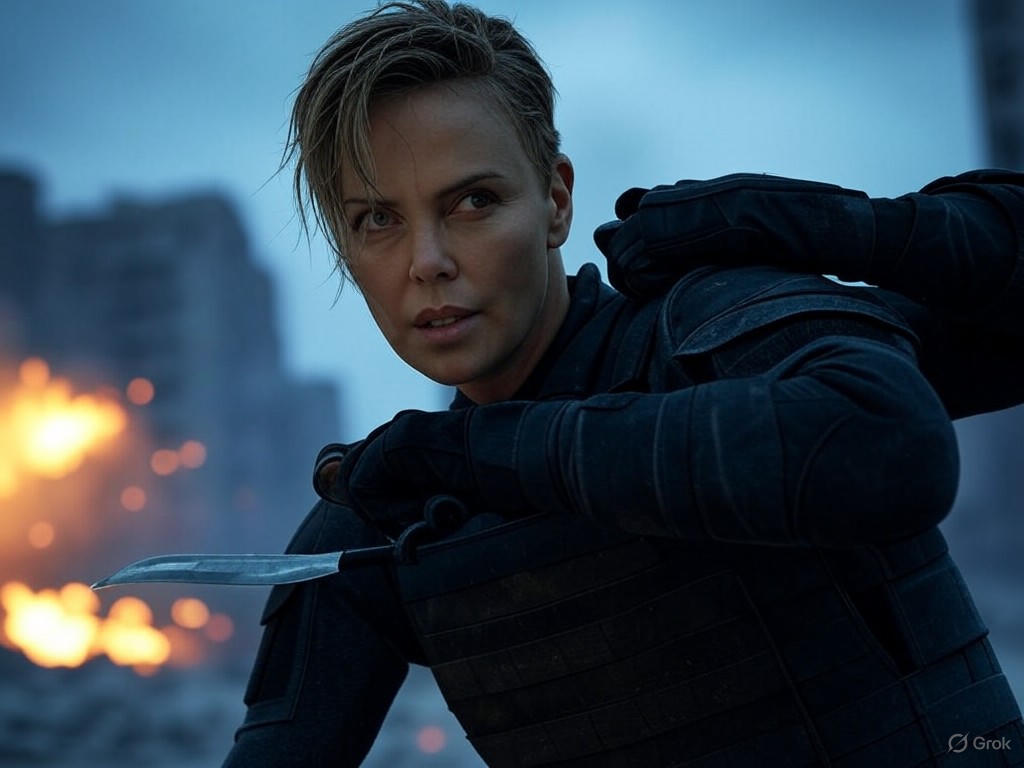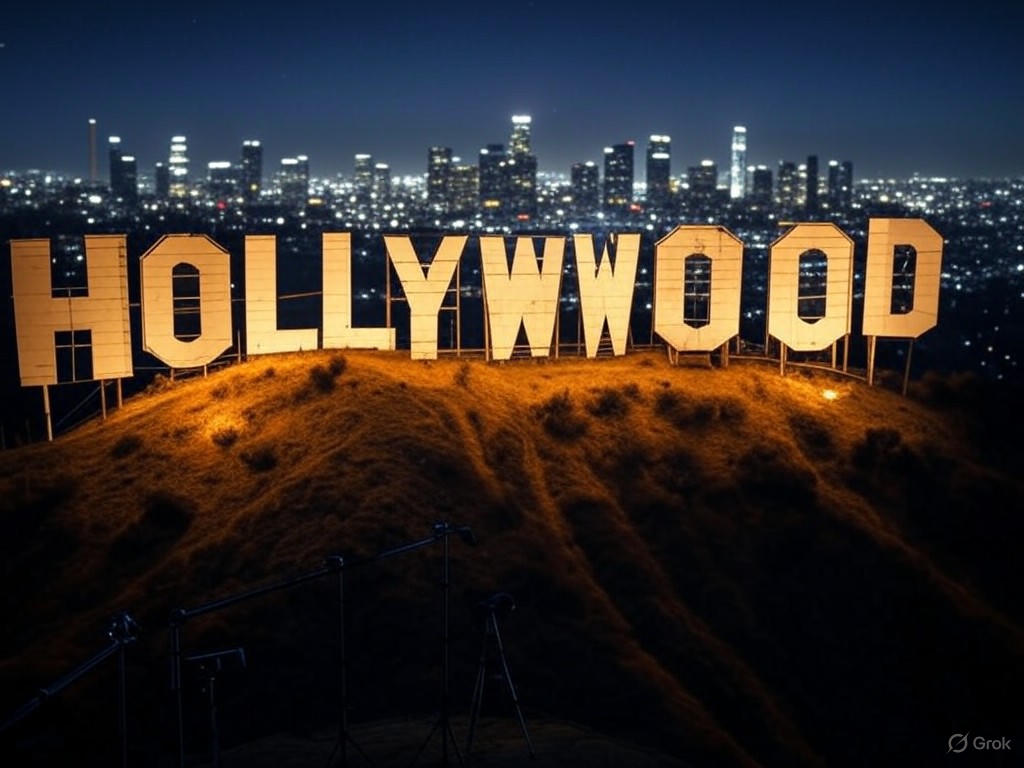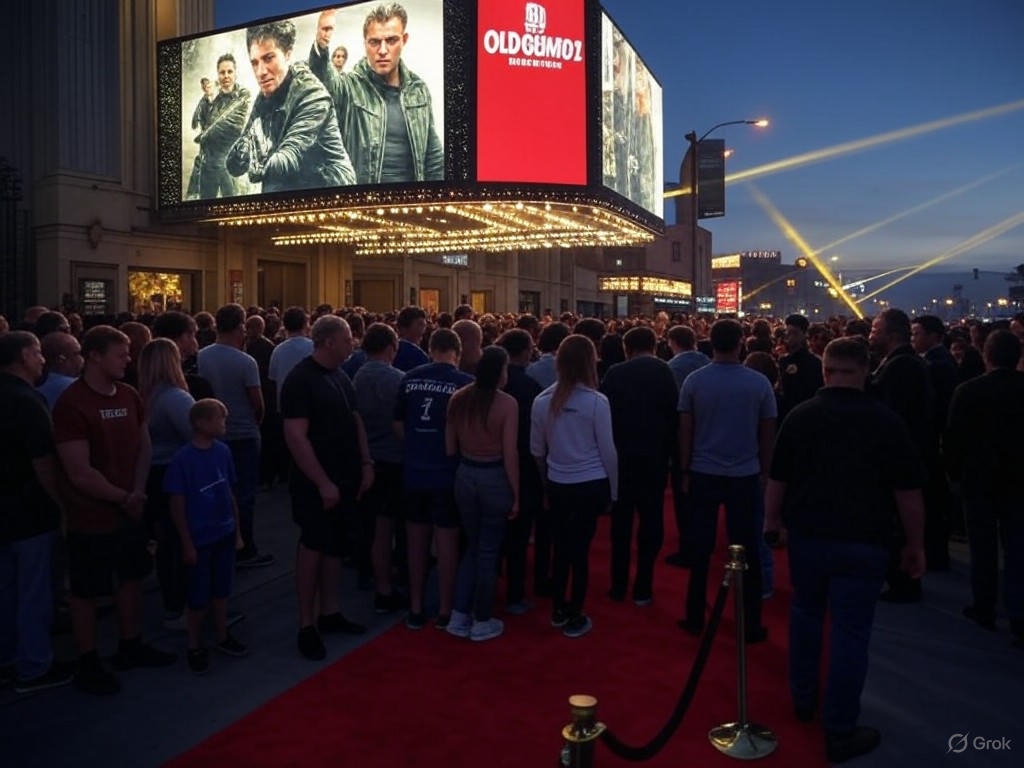The Old Guard 2: Hollywood’s Action Renaissance
In an era where screens flicker with digital distractions and fleeting trends, Hollywood occasionally delivers a story that cuts through the noise with raw, unyielding force. Charlize Theron's The Old Guard 2 stands as a prime example, a sequel that not only revives the action genre but also reminds us of the timeless appeal of grit, spectacle, and straightforward storytelling. Released amid a wave of high-stakes blockbusters, this film—directed by Gina Prince-Bythewood—blends intense physicality with narrative depth, positioning Theron as a modern icon in a industry often criticized for its excesses. Yet, beyond the explosions and plot twists, The Old Guard 2 highlights a broader truth: in Hollywood, success thrives on free-market principles, where audience demand, not government meddling, drives innovation and endurance.
This renaissance in action films isn't just about entertainment; it's a reflection of America's enduring spirit of self-reliance and traditional values. Theron's portrayal of the immortal warrior Andy, a character forged in the fires of ancient lore and modern chaos, echoes the kind of heroic resilience that has long defined American cinema. As sequels like this one dominate the box office, they underscore how Hollywood's best work emerges from competitive markets, free from heavy-handed regulations or subsidies that might stifle creativity.
The Grit and Spectacle of Modern Action
At its core, The Old Guard 2 exemplifies the evolution of the action genre, merging high-octane spectacle with the kind of grounded realism that resonates in everyday life. Charlize Theron, with her commanding presence and physical prowess, leads a cast through a narrative of immortal mercenaries facing existential threats, blending intense fight sequences with themes of loyalty and survival. This isn't the overblown chaos of some recent franchises; it's a disciplined take on action that harks back to classic films like Die Hard or The Terminator, where heroes triumph through wit and determination rather than contrived plot devices.

Charlize Theron showcases unyielding determination in a pivotal fight sequence, capturing the film's blend of physical intensity and emotional depth.
Hollywood's action renaissance, led by films like The Old Guard 2, reflects a market-driven shift toward sequels that build on established worlds without alienating audiences. According to data from industry analysts, sequels now account for nearly 40% of top-grossing films, a trend that speaks to consumer choice in a free economy Variety. Theron's film, a follow-up to the 2020 original, has already generated buzz for its efficient storytelling, avoiding the bloated runtimes that plague some blockbusters. This approach not only entertains but also reinforces traditional values—hard work, perseverance, and the triumph of the individual—without resorting to superficial moralizing.
Yet, this success isn't without challenges. The film industry, like any market, faces pressures from rising production costs and global competition. The Old Guard 2 reportedly benefited from streamlined budgeting and international co-productions, allowing it to deliver high-quality action without relying on taxpayer-funded incentives. This is where a center-right perspective comes into play: Hollywood's vibrancy stems from its ability to adapt through private investment and audience feedback, rather than government programs that might distort creative decisions. As The Wall Street Journal notes, films that prioritize market demands over regulatory favors tend to perform better, fostering an environment where talent like Theron can shine.
Analyzing Hollywood's Sequel Surge
The surge in action sequels, with The Old Guard 2 at the forefront, reveals deeper trends in Hollywood's ecosystem. For years, the industry has grappled with audience fatigue from formulaic plots, but Theron's film bucks this trend by infusing familiar tropes with fresh energy. Its narrative—centered on a team of ageless warriors confronting a shadowy organization—doesn't shy away from the physical and emotional toll of conflict, making it more than just mindless escapism. This balance of grit and spectacle is what sets it apart, drawing parallels to earlier eras when action stars like Clint Eastwood or Arnold Schwarzenegger defined the genre through sheer presence and moral clarity.
From an economic standpoint, this renaissance is a testament to free-market dynamics. Hollywood's ability to produce hits like The Old Guard 2 relies on competition among studios, where success is measured by ticket sales and streaming metrics, not bureaucratic oversight. Recent reports indicate that films with strong sequel potential, such as this one, generate significant returns through merchandising and global distribution Hollywood Reporter. Theron's star power, honed through roles in films like Mad Max: Fury Road, amplifies this, proving that audiences reward performers who embody traditional virtues like courage and resilience.
However, not all is seamless. Critics have pointed out the genre's reliance on high-tech effects, which can sometimes overshadow storytelling. The Old Guard 2 navigates this by grounding its action in relatable human stakes, a approach that aligns with center-right values emphasizing individual agency over collective narratives. As Deadline Hollywood observes, the film's success hinges on its appeal to a broad audience, from families seeking adventure to adults valuing straightforward heroism, without pandering to niche trends.

The Hollywood sign glows against the night sky, symbolizing the enduring allure of American filmmaking driven by market forces and timeless stories.
Evidence of a Thriving Genre
Data underscores the impact of The Old Guard 2 on Hollywood's action landscape. Early box office projections suggest the film could gross over $200 million worldwide, buoyed by positive reviews and Theron's magnetic performance Box Office Mojo. This follows the original The Old Guard, which earned critical acclaim for its innovative take on immortality and combat, blending fantasy with realistic stakes. Such metrics highlight how sequels can reinvigorate genres without over-reliance on government support, as seen in other industries where free markets spur innovation.
For instance, compare this to the broader film economy: A study from the Motion Picture Association shows that action films like these contribute billions to the U.S. economy through job creation and exports, all without direct subsidies MPA. Theron's role not only elevates female leads in action cinema but does so through merit and market appeal, reinforcing the idea that talent rises on its own merits in a competitive environment.
Yet, this evidence also points to potential pitfalls. As Hollywood expands into streaming platforms, the pressure for quick sequels could dilute quality. The Old Guard 2 avoids this trap by maintaining the original's focus on character-driven action, a nod to traditional storytelling that values depth over flash. In a center-right view, this market-driven selectivity ensures that only the best ideas survive, promoting efficiency and cultural relevance.
Conclusion: The Future of Action in a Free Market
As The Old Guard 2 cements Charlize Theron's place in Hollywood's action canon, it serves as a beacon for the industry's future. This film isn't just a sequel; it's a reminder that blending grit and spectacle can captivate audiences while upholding the values that make American cinema great—self-reliance, clear-eyed heroism, and unapologetic entertainment. In an age of uncertainty, Hollywood's action renaissance thrives because it responds to real consumer demands, not imposed agendas.
Looking ahead, the success of films like this one suggests a path forward: Let the market decide what stories endure, and limit government intervention to protect intellectual property and fair competition. Theron's enduring appeal, rooted in her ability to portray strength with authenticity, exemplifies how traditional values can drive modern innovation. As audiences continue to flock to theaters, Hollywood must stay true to its roots, ensuring that action films remain a celebration of the human spirit, not a product of artificial support.

A diverse crowd gathers for a film premiere, illustrating the market-driven excitement that fuels Hollywood's action genre.

